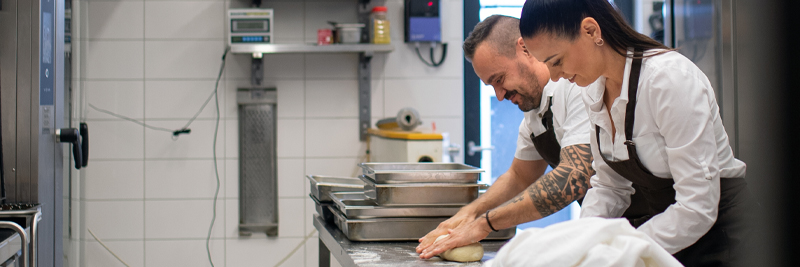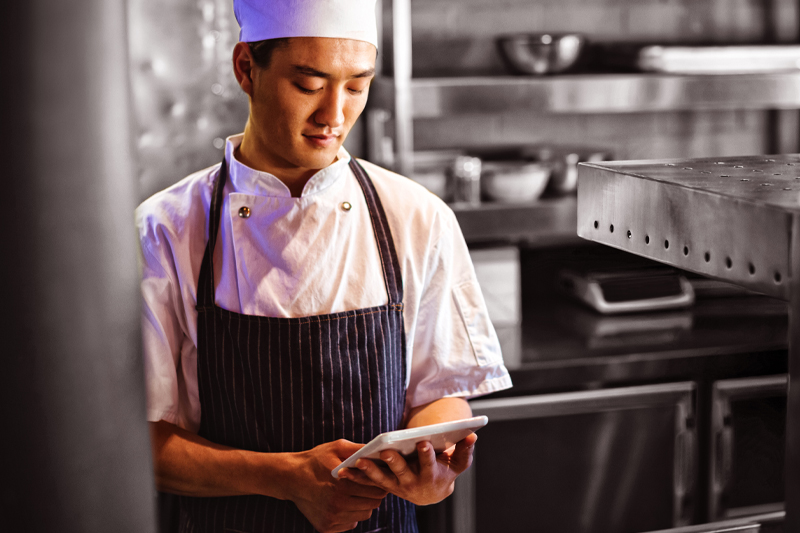Kitchen displays are more advanced than ever before.
Ever since digital displays became more affordable and prevalent, kitchens worldwide have been using screens in their workflow. But in the last few years, new technologies and use cases have emerged that are changing the way we think about kitchen displays. Kitchen Display Systems (KDS) are becoming more popular as restaurants look for ways to improve efficiency and guest experience. KDS provides a real-time view of the kitchen, so staff can see what’s happening with each order. This helps them make sure that food is prepared correctly and served promptly.
Different Types of KDS for Different Restaurants

To understand the innovative ways kitchens are using display systems, you need to know the three types of KDS available:
1. Tabletop displays are small screens that sit on the counter or a table. They’re usually used in quick-service restaurants, where guests order at the counter and pick up their food when it’s ready.
2. Wall-mounted displays are larger screens that are mounted on the wall for easy viewing. They’re often used in fast-service restaurants, where patrons order at a counter, to display the menus. However, they can be used in full-service restaurants as well, providing a crisp connection between the front and back of the house.
3. Portable displays are handheld devices that can be taken anywhere in the restaurant. They’re helpful for managers who want to check on the status of orders from anywhere in the kitchen.
Here are some of the latest trends in kitchen display systems
1. Multi-touch displays
Kitchen displays are now available with multi-touch capabilities, making them more intuitive and user-friendly. With multi-touch, you can perform everyday tasks such as zooming in and out or scrolling through menus with a few simple gestures.
2. High-definition displays
HD screens provide a sharper image, which is necessary for showing detailed photos of menu items. With HD, you can also offer multiple orders on the same screen without one order being too small to see. More extensive and more precise screens mean you can mount your “back of house” display, and cooks and chefs can still see it from a distance.
3. Energy-efficient displays
Many kitchen displays now use LED backlighting, which is more energy-efficient than traditional CCFL screens. LEDs also provide better color accuracy and contrast, so you can be sure that your customers will see your food in the best light.
4. Cloud-based management
With cloud-based KDS software, you can manage your system anywhere. You can add new menu items, change existing things, and track orders in real-time. Cloud-based systems also make it easy to share data with other departments in your restaurants, such as the front-of-house or accounting.
5. Scalable solutions
KDS systems are now available in various sizes and configurations to fit the needs of any restaurant. If you’re a small business, you can start with a single screen and add more displays as your business grows. For larger restaurants, you can choose from various KDS software packages that offer different features and integrations.
Who is a Kitchen Display System for?

The uses for KDS are limitless, meaning that any type of restaurant can benefit from using one. Quick-service restaurants can use KDS to speed up the ordering process and get food to the customer faster. Full-service restaurants can use KDS to improve communication between the front and back of the house. And all types of restaurants can use KDS to make sure orders are prepared correctly and served on time.
If you’re thinking about adding a kitchen display system to your restaurant, keep a few things in mind. First, decide which type of KDS is right for your business. Tabletop displays are ideal for quick-service restaurants, while wall-mounted or portable displays may be better for full-service establishments.
Second, consider your budget and the features you need. KDS systems can range from a few hundred dollars to several thousand, so it’s essential to find one that fits your needs and budget.
Finally, make sure you choose a reputable supplier with experience in the restaurant industry. A good KDS supplier will be able to help you choose the right system for your business and provide ongoing support to ensure that your system is always running smoothly. When it comes to outfitting your restaurant with the latest technology, a kitchen display system (KDS) is a must-have.
Need help choosing the right KDS for your business? Our experts can help you narrow down your search and have you taking and fulfilling orders in no time. Contact us here, and let’s discuss your options.



